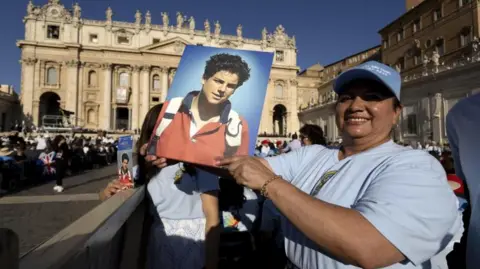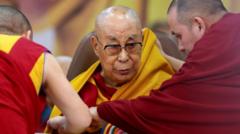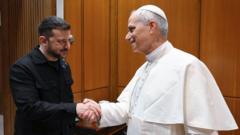The Vatican is gearing up for the highly anticipated papal conclave, commencing Wednesday, following the passing of Pope Francis at 88. Inside the Vatican’s famed Sistine Chapel, 133 cardinals from various parts of the globe will convene under strict secrecy to deliberate and vote until one cardinal garners a two-thirds majority.
Jason Horowitz, Rome bureau chief for The New York Times, emphasizes the political intrigue inherent in the conclave. “It has pure politics, with backstabbing, and throwing people under the bus, and putting up fake candidates,” he remarked, referring to his experiences covering previous conclaves. The cardinals will cast votes privately, with the results announced via the color of smoke emitted from the chapel chimney after each session. Black smoke indicates no decision has been reached, while white smoke signals that a new pope has been chosen. Notably, the conclave has been known to last anywhere from a few hours to an unprecedented three years, a record set during the 13th century.
Once the white smoke rises, news of the new pope will swiftly appear on major news platforms, bringing with it insights into the selected leader's views and potential direction for the Church. “At least, that’s the hope,” Horowitz adds, indicating readiness for any last-minute surprises that could arise from unexpected candidates stepping into the spotlight.
Jason Horowitz, Rome bureau chief for The New York Times, emphasizes the political intrigue inherent in the conclave. “It has pure politics, with backstabbing, and throwing people under the bus, and putting up fake candidates,” he remarked, referring to his experiences covering previous conclaves. The cardinals will cast votes privately, with the results announced via the color of smoke emitted from the chapel chimney after each session. Black smoke indicates no decision has been reached, while white smoke signals that a new pope has been chosen. Notably, the conclave has been known to last anywhere from a few hours to an unprecedented three years, a record set during the 13th century.
Once the white smoke rises, news of the new pope will swiftly appear on major news platforms, bringing with it insights into the selected leader's views and potential direction for the Church. “At least, that’s the hope,” Horowitz adds, indicating readiness for any last-minute surprises that could arise from unexpected candidates stepping into the spotlight.





















